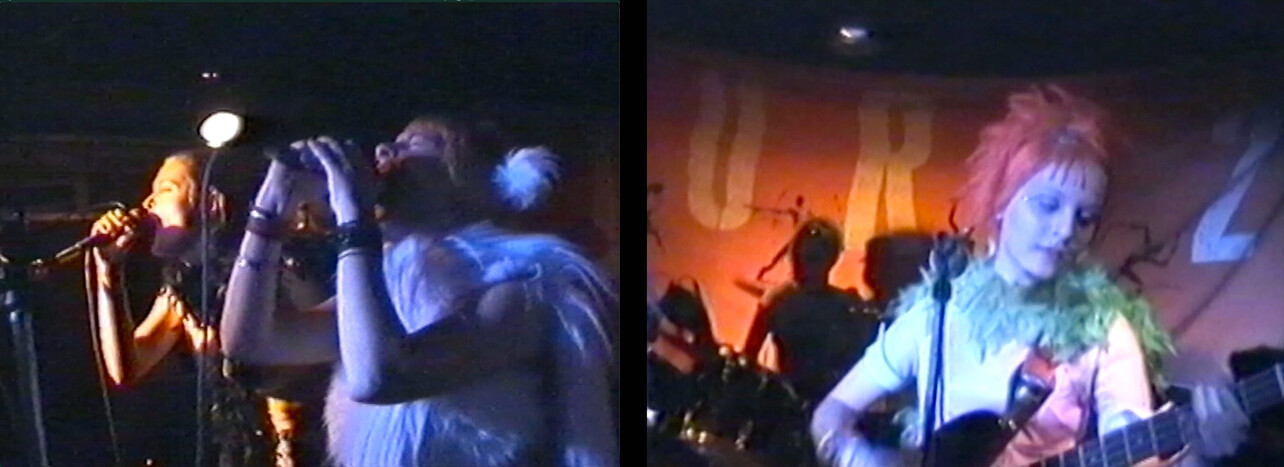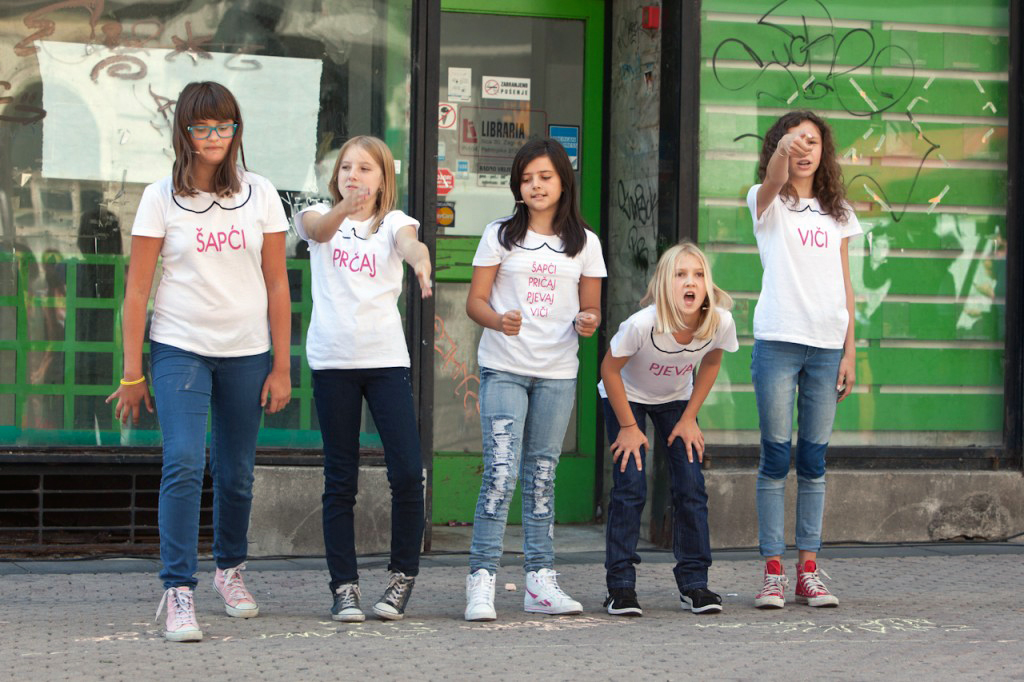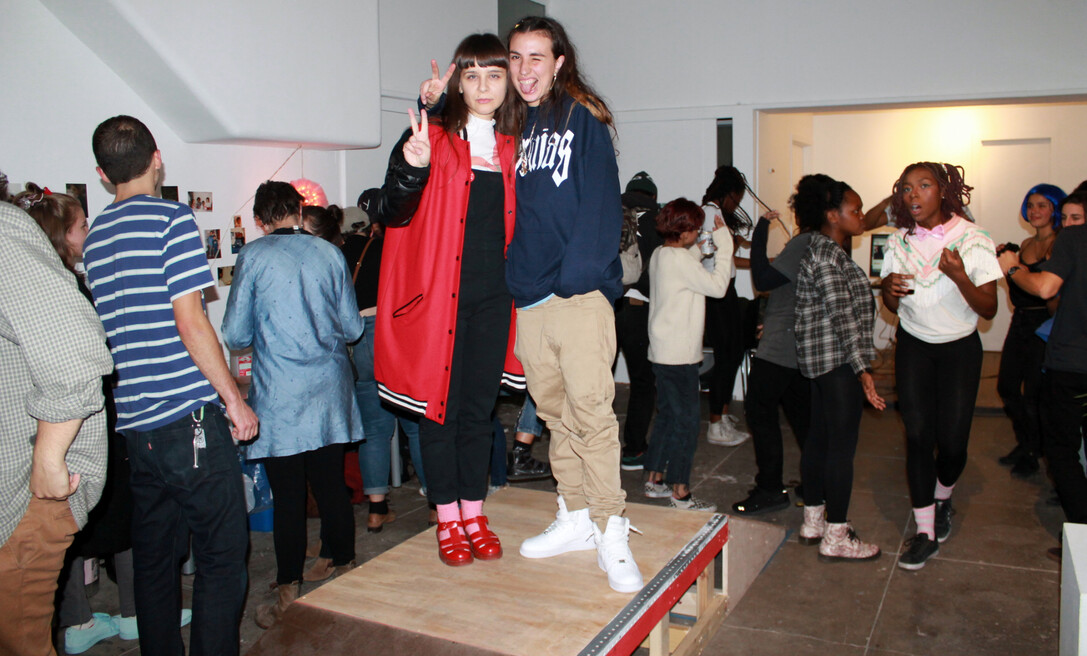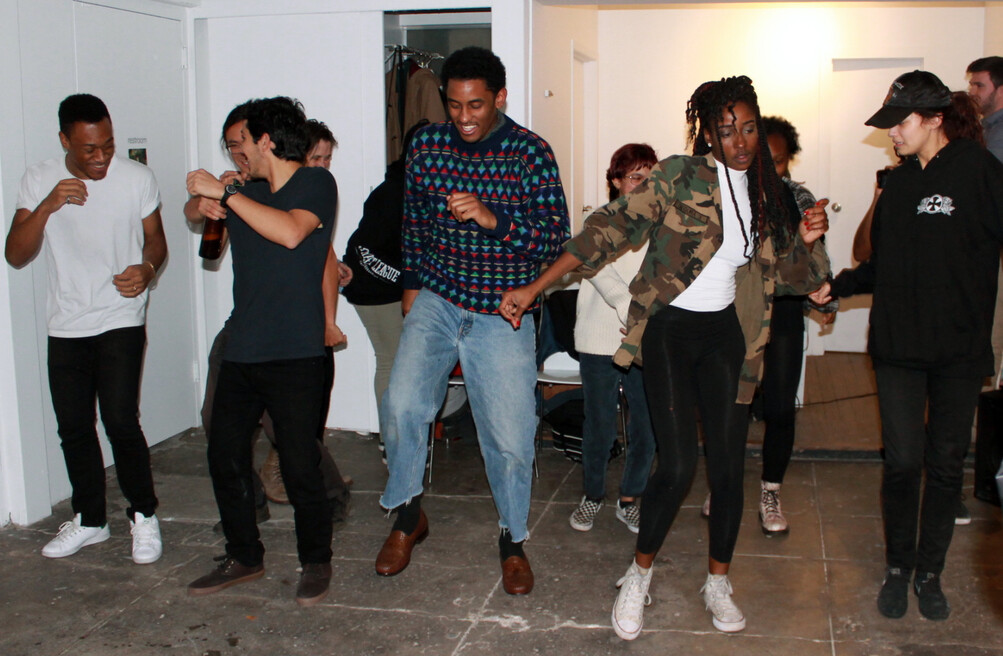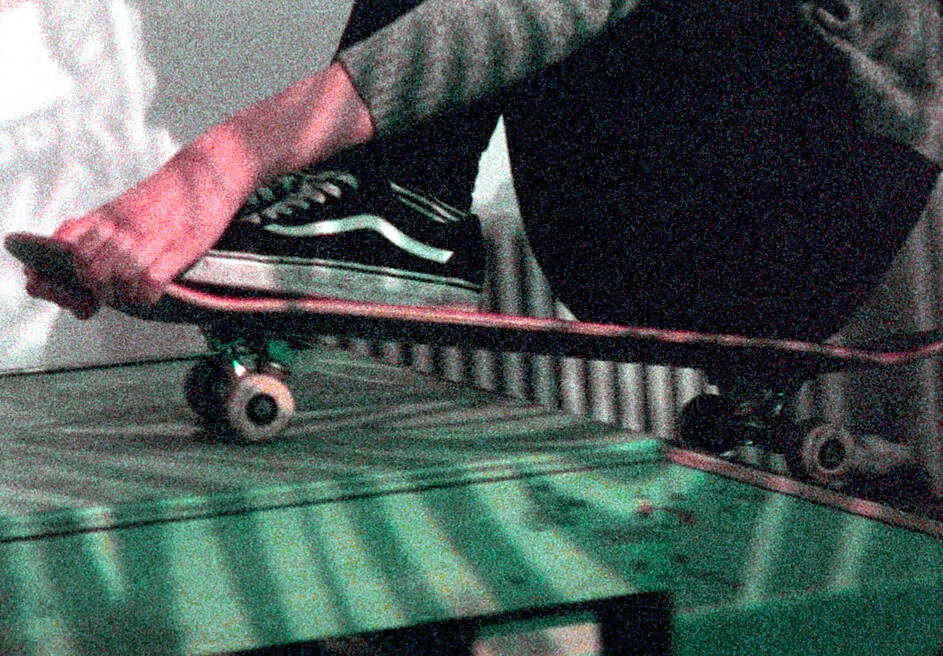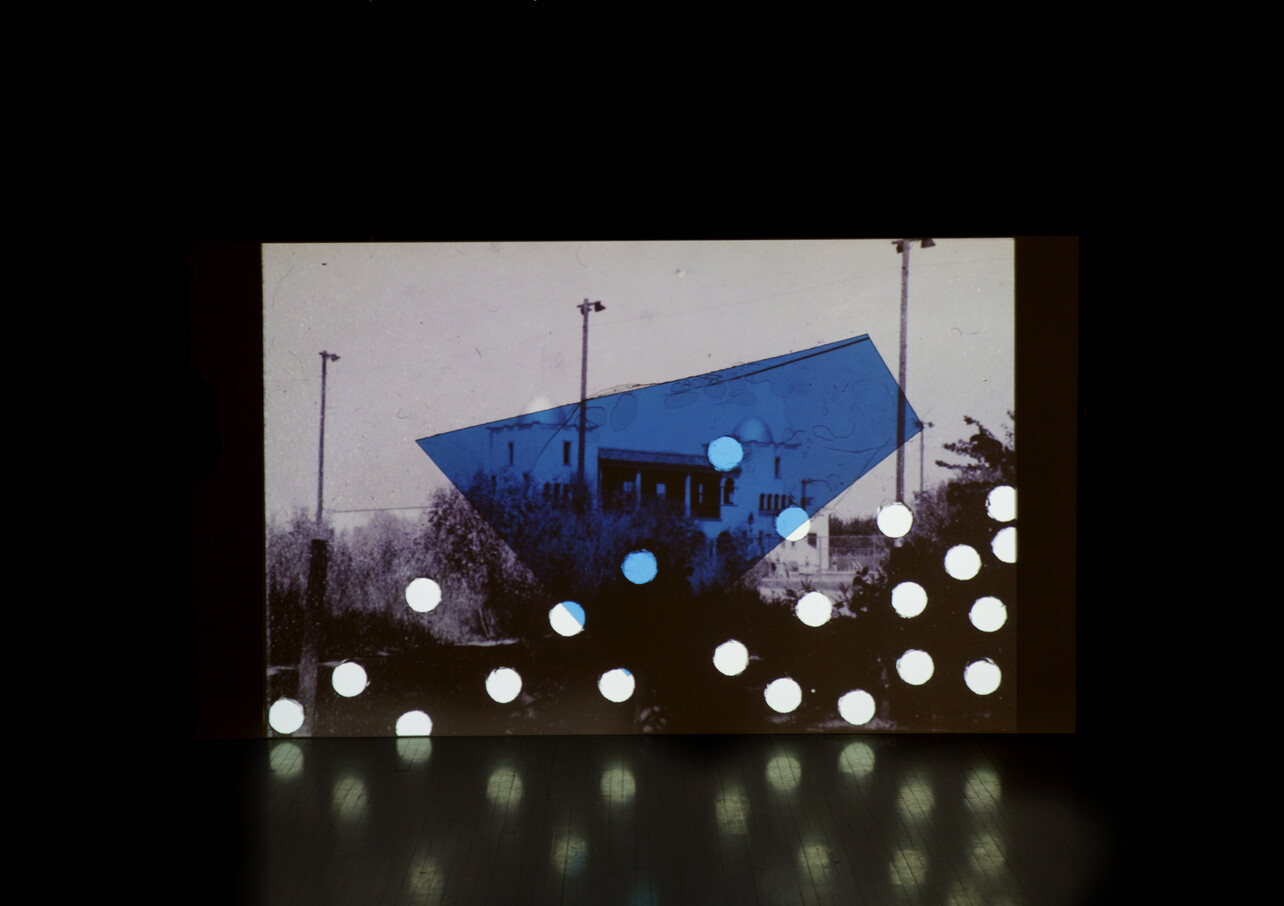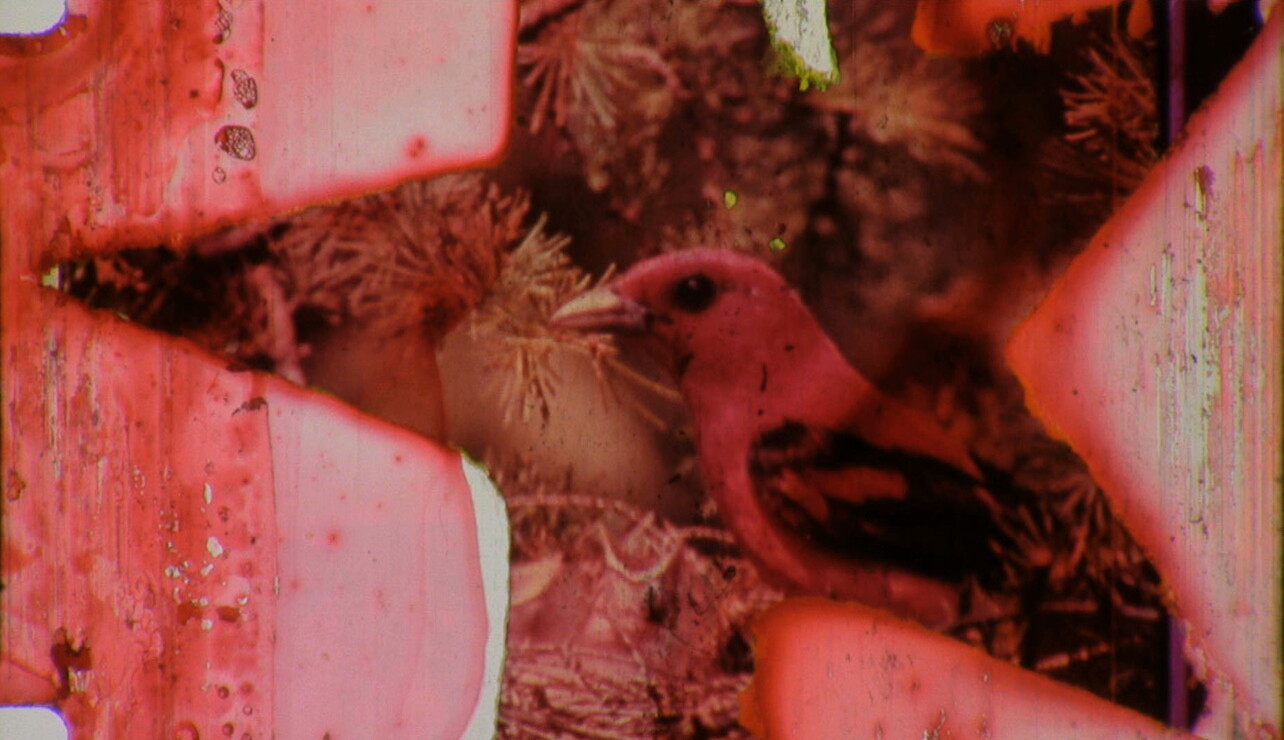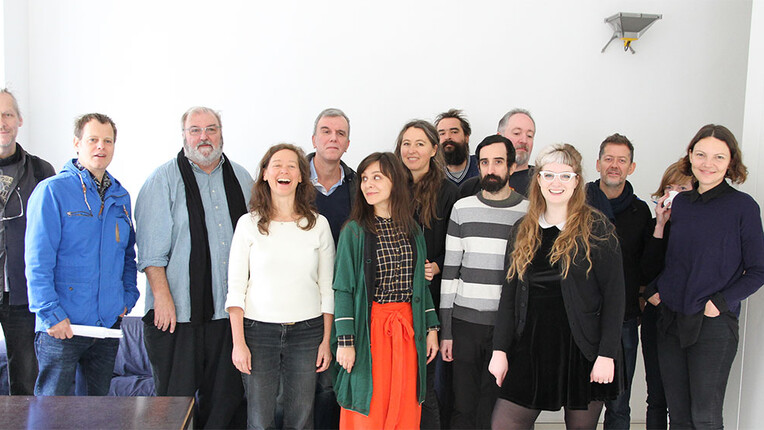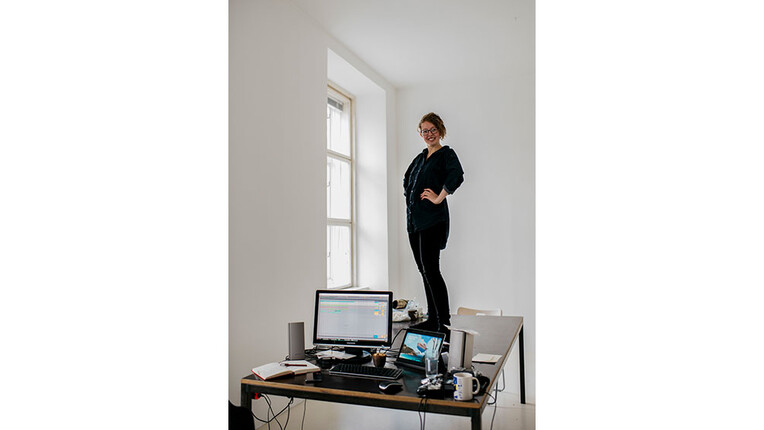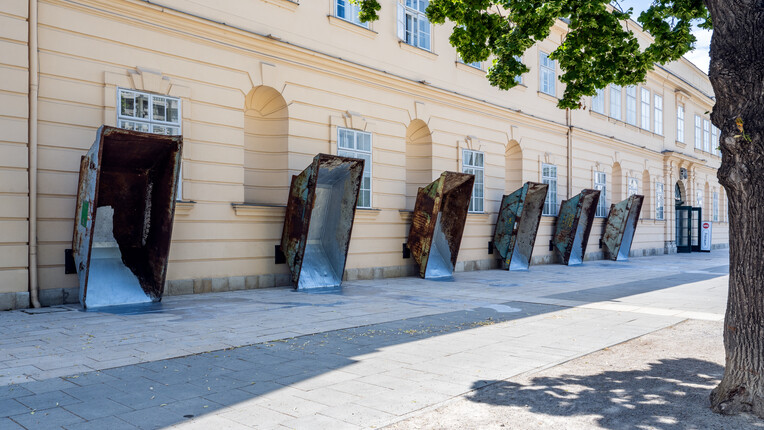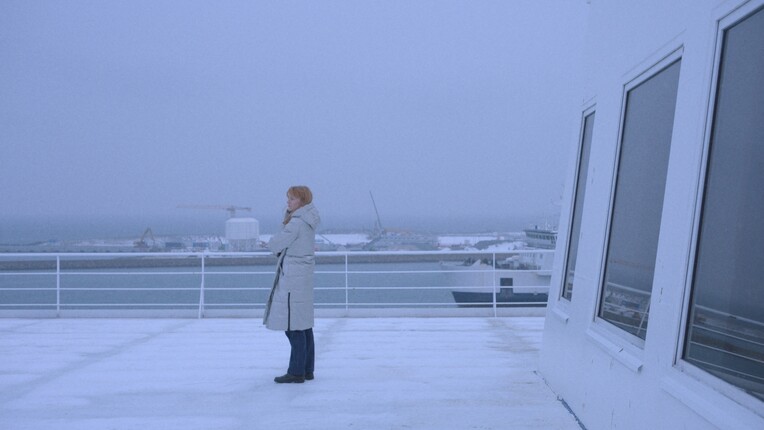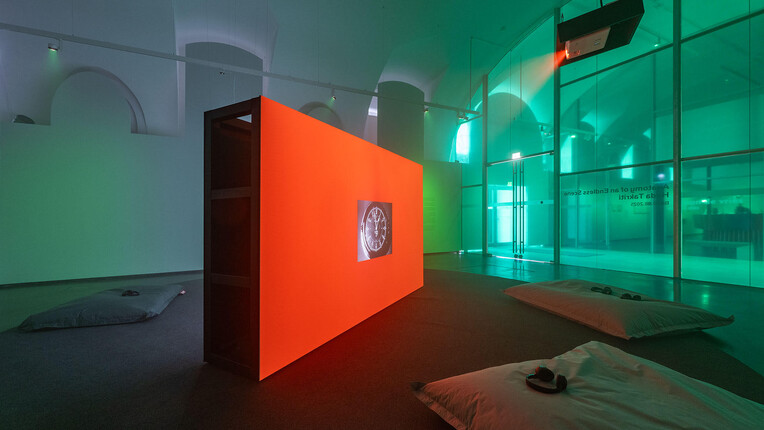![[Translate to English:]](/fileadmin/_processed_/1/1/csm_Gita-Blak-Header_86a911ef57.jpg)
Who is Gita Blak?
Željka Blakšić aka Gita Blak is an interdisciplinary artist born in Zagreb and currently based in New York City and Artist-in-Residence at Q21 in November and December 2017. Her artworks and projects often combine different types of media and are influenced by the so-called “underground scenes” and subcultures. Catch a glimpse of what’s happening behind her studio doors, follow her around town as she’ll be taking over Q21′s Instagram account at the end of December and find out more about her work in Vienna.
Željka Blakšić aka Gita Blak is an interdisciplinary artist born in Zagreb and currently based in New York City and Artist-in-Residence at Q21 in November and December 2017. Her artworks and projects often combine different types of media and are influenced by the so-called “underground scenes” and subcultures. Catch a glimpse of what’s happening behind her studio doors, follow her around town as she’ll be taking over Q21′s Instagram account at the end of December and find out more about her work in Vienna.
Who is Gita Blak? Where does the name come from and what role does it play to have an alter ego for your artistic practice?
You mean Željka Blakšić? I am an interdisciplinary artist, currently based in NYC. Since a very young age I was involved with different bands in Croatia and we were always playing with this idea of having a stage name. It is something musicians do a lot. During the 90s, I was very active as a member of Zagreb’s first exclusively female punk band The Schizoid Wiklers. I have always been interested in both the music and performance and its potentials regarding social engagement. Gita was my nickname (it’s a character from a famous book), Blak is half of my last name. So connecting these two names was a way to connect both of these worlds and practices.
What is the role of music in your work?
For me music is a language and it’s one of the most primal aspects of culture. When I was barely 3 years old, my Mom enrolled me in a small local children’s choir, which grew to be one of the biggest choirs in Croatia. Singing with a group of people is wonderful, it facilitates closeness and collaboration, it’s much more than just hanging out together. You start to see how a group is more powerful and greater than its single members. You simply sound better in a choir than you do on your own. I also learned how important and powerful song lyrics can be and what they can accomplish. I have one work that draws inspiration from this experience. It is a performance piece called Whisper, Talk, Sing, Scream! I created it for the 13th UrbanFestival, a festival of contemporary art in public space held in Zagreb. It was a huge project on which I collaborated with writers, poets, local activists and journalists in order to create non-classical song-stories that talk about the fights and protests that occurred in Croatia in the recent years. The songs were performed on various city squares by young girls, 10 to 12 years old, members of Drama Groups of The Dubrava Children’s Theatre.
In terms of #metoo and the art scene, do you have a comment?
Sexual harassment at home, school or the workplace is real, it’s a crime and it’s not normal. It should not be tolerated. I support all the people (on my Facebook there were also a few men who posted #metoo) who decided to share their personal stories by posting, “Me too.” I just hope it will encourage a more long-term change in our society, so that more women intervene or get support when they see or experience something wrong.
What are your experiences in the „art world“ – is it hard to claim space? (Is there only place for those who bring it with them?)
Well, we all know that contemporary art is a place of silent elitism and privilege regarding everything from administration and production to presentation. Still, many people are not able to come into contact with art for various reasons, mostly class structure. In a lot of projects that I create I try to dismantle that or at least criticize it. But I do think we live in times where the role of art is rapidly changing and I am hoping that in a near future I will see more institutions moving away from white supremacy rhetoric – less European dominance at all levels, less cult of personalities, more decolonial thinking and generally better conditions that can lead to some concrete and positive actions.
As a Croatian artist living in NYC – what is your impression of the „underground“ scene there?
If you are asking me about alternative youth cultures in NYC right now, I think that there has been a huge shift from the way we remember underground scenes and the way we lived in them. It used to be easier to define people based on how they dressed, which was directly connected to the music they liked. You would know immediately to which tribe they belonged – whether it was punk, skinhead, goth, hippie, hardcore, metal, rap, grunge, rockabilly or, later, raver. Growing up, we had all of these subcultures and some of them had a serious ideology behind them. Because of that, they were very often in conflict with each other. I think today all this has been changed by the internet. It is also my impression that there might be less action in the streets. Still, I do think that today there are many underground scenes, but they seem short-lived, are internet-based and kind of hard to track down. When I think of a few examples I saw in New York in the last 10 years, it’s that when the mainstream picks up on something and appropriates it from a subculture, it kind of destroys it or completely transforms it. And all these transformations are happening incredibly fast.
For your project BROUHAHA you have worked together with Brujas – how did this come about? And what is your understanding of feminism?
BROUHAHA was a collaborative project created in 2016. The idea was born a year before, when I learned of a group of girls called Brujas, who were skaters from the South Bronx with a very clear political agenda I completely stood behind as well. I really wanted to work with them and support them and I thought through Recess’ Sessions Program we could make this possible together. Recess is a small institution, a gallery, open for interdisciplinary projects because they support untypical rigorous new works while offering the public access to the artists’ creative process, transforming the gallery into a site for public discourse. I wanted to abandon the status quo of this classic role of an artist and create a new kind of open-ended work that will have a social impact and will continue to live on after the project concludes. I wanted to create this perfect temporary institution, built specifically for us, whose members could later on take it and develop it in any way they wished! This meant collaborating with allies in order to initiate communication, exchange and dialogue between people (in this specific case youths) and related disciplines. Throughout this two-month project we hosted skate sessions, workshops, screenings and conversations that presented our commitment to creating networks of support outside of established societal norms. And if art is socially engaged, it needs to learn from politics. That’s why I started “School of Politics”, one segment was also presented as part of BROUHAHA, our most attended program. Zine, film and the exhibition were just little parts of a greater process.
Regarding feminism, I am trying to be careful and move away from this pop, Western-centric kind of feminism. “Intersectionality” is a key term for me. We need to fight all forms of exploitation simultaneously. Feminism, the fight against class systems and anti-racist activism need to come together. We have to emphasize the multiple ways in which racial and gender oppression are experienced. And yes, it’s a lot of work.
Some of your works also include or address youth culture, subcultures – is that the basis and inspiration for your art in general?
Growing up in times of extreme political turmoil and conflicts, caused by the disintegration of Yugoslavia, gave me this sense of responsibility, an idea of activism and of what it means to be a good citizen. It was an extremely important goal for me long before I was making art or realized I was an artist. Being socially and politically engaged at a very young age and to work collectively and in solidarity meant that I was also a good citizen and a person who cares about her surroundings, what’s happening to them, and most of all what’s happening to the people – neighbors etc. The anarcho-punk scene of those times is not the basis for my art in general but it does inform my work.
In your project „Clearing Agent”, based on the book “Burlington (Iowa) ‘Once upon the time’”, you found out that Dan Bield wanted to excel in everything – writing, painting, drawing, jazz. How important is excellence for you / in your practice?
I learned about Dan Bield by accident. I always buy 16mm films, photographs, old cameras and objects on eBay and thrift markets, and one time I purchased a Kodak Carousel Projector. Somebody left a series of 35mm slides inside the projector’s box – and also a book. It was Bield’s series of photographs and his book “Once Upon the Time – A collection of Nostalgic Pictures and Other Memorabilia” about the author’s home town. I left it in my studio for many years, not really planning or knowing what to do with it. But then Boshko Boskovic, a curator based in New York, approached me with his curatorial project for which he invited artists to produce new works by utilizing archival photographs that are reinterpreted and reconstructed in order to create new narratives. I decided to reanimate these photographic slides and to add new information to this archival material. I carefully reworked each slide with a different array of tools and processes such as burning, cutting, bleaching, collaging or producing countless miniature collages, I later digitized and scripted them into a sequence of scenes and turned them into a montage of a new moving image piece. In a formal sense the project also comments on analog and digital space – it lives somewhere in between.
Since I am interested in the esthetics and philosophies of DIY-cultures, I care about the conceptual excellence more than about the execution. Mistakes, failures and errors are more inspiring and they often offer more interesting results.
On your vimeo Channel I came across the video “Still dreaming (Song 1) from ‘The Resistance of the Earth Project’“. What is this project about?
“Resistance of the Earth” is a multimedia performance commissioned by Janez Trdina Cultural Center from back when Novo Mesto, a town in Slovenia, was European Capital of Culture in 2012. The project was a collaboration with Slovenian composer Igor Lumpert who composed all the music for it. The project consists of many different elements, a short documentary, a series of seven 16mm films, live music played by a big band and a choir and a spoken word performance by the students of a local school. When we got this commission, Hurricane Sandy was raging in New York, but it was also a time when a few of my friends left the States and went home to Japan so they could help their families whose homes were completely destroyed by the tsunami that hit the country the year before. The project attempted to comment on all those natural disasters that keep happening. Educational films from the 60s and 70s I purchased on eBay served as a basis for the seven films I created. Collaging, scratching and drawing directly on movie tape is a highly expressive, transformative and inexpensive way of making a film. I wanted to explore the vocabulary of the medium and do something that is only possible with this specific medium. That is important because technology is not apolitical and doing it like that is a way to resist the dominant modes of production.
What are you working on during your residency?
I am exploring this neighborhood in Vienna called Simmering. I am working on a series of photographs and a short experimental 16mm film. I think it is a special neighborhood in many ways. It’s an industrial part of Vienna, also a segment of “Red Vienna” where social democrats pushed for the construction of social housing. Then, during the rise of Nazism in the 1930s, Simmering showed very little support for that ideology. These were some starting points. Processed rolls which I shot on this location will be radically altered but they will still bear visible traces of their previous form; and this concept directly correlates with the surrounding architecture where old structures meet and break through contemporary ones, creating this distinctive urban scenery.
Željka Blakšić will take over Q21′s Instagram account from December 22 til New Year’s Eve: Get a glimpse behind her studio door & follow her through town.
